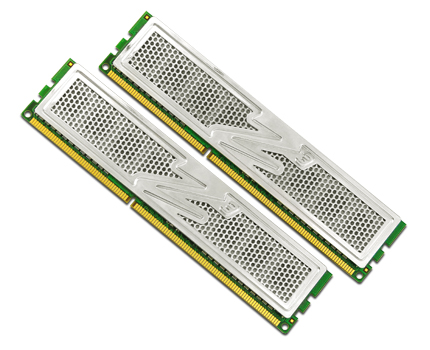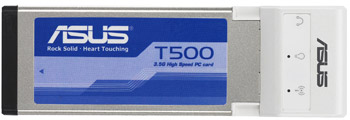 |
||
|
||
| ||
SPEC Releases MPI Benchmark Suite OCZ Announces Enhanced Bandwidth High Performance 1600MHz Modules Toshiba To Launch World's Highest Performance 3D Graphics LSI for Mobile Phones ASUS Introduces T500 3.5G PCIe Card SPEC Releases MPI Benchmark Suite The Standard Performance Evaluation Corp. (SPEC) has released a benchmark suite that measures the performance of parallel computing systems and clusters running Message-Passing Interface (MPI) applications. SPEC MPI2007 provides performance metrics that can be used to compare different hardware architectures (SMP, NUMA, clusters) and interconnects, processors, memory hierarchy, compilers, and MPI implementations. It tests performance based on actual end-user applications, instead of synthetic workloads or parallelized versions of sequential benchmarks. SPEC MPI2007 was developed by SPEC members AMD, Argonne National Lab, Fujitsu-Siemens, Hewlett-Packard, IBM, Intel, QLogic, SGI, Sun, and the University of Dresden. It supports a wide range of 32- and 64-bit architectures, and is portable across Linux, UNIX and Windows operating systems. A medium-sized data set in SPEC MPI2007 scales up to 512 processors, and SPEC is working on larger data sets. Two metrics are provided by SPEC MPI2007: A base metric for users who prefer the relative simplicity of a single-step build process, and a peak metric for those who want to experiment with different compilers and compiler flags to achieve the best performance. Performance measurement is normalized against a reference system to produce a “bigger-is-better” metric. The current reference system is an eight-node cluster of Celestica A2210 systems, each with dual AMD Opteron processors, connected by a TCP (GigE) interconnect. SPEC MPI2007 is available immediately for $800 on DVD. Source: Standard Performance Evaluation Corp.
OCZ Announces Enhanced Bandwidth High Performance 1600MHz Modules OCZ Technology Group announces two new 1600MHz parts including the world’s first enhanced bandwidth high speed DDR3. The newest additions to the OCZ DDR3 family offer enthusiasts performance they can really sink their teeth into and feature speeds of 1600MHz and the latencies of 7-7-7 and 7-6-6 on ASUS motherboards. The new PC3-12800 Platinum Edition (OCZ3P16002GK) was developed to offer enthusiasts a memory solution that takes full advantage of the capabilities of the Intel P35 and X38 Express chipsets. At 1600MHz, the OCZ PC3-12800 Platinum and is rated to run CL7-7-7 to take these next generation platforms to new heights.  For enthusiasts OCZ is introducing the PC3-12800 EB (Enhanced Bandwidth) Edition (OCZ3P1600EB2GK) featuring the balance of DDR3 speed and enhanced timings. This memory is specially designed and optimized for the latest generation of ASUS motherboards. As one of OCZ’s legendary Enhanced Bandwidth (EB) editions, the DDR3-1600 Platinum EB increases effective memory bandwidth through the optimization of memory latencies between the system memory, the chipset, and memory controller. At 1600MHz, the PC2-12800 EB edition is rated for 7-6-6 timings on ASUS platforms. Both OCZ Platinum DDR3-1600 modules will be available in 2x1024MB dual channel kits. Each module is 100% hand-tested and features a proprietary platinum-mirrored XTC (Xtreme Thermal Convection) heatspreader for the effective heat dissipation. Specs:
Source: OCZ Technology Group
Toshiba To Launch World's Highest Performance 3D Graphics LSI for Mobile Phones Toshiba Corporation announced a dedicated 3D graphics LSI that is claimed to add previously unseen levels of realism to games played on mobile phones. The new LSI, "TC35711XBG", can render 100 mega-polygons a second (i.e., 800 megapixels/second), a performance that far surpasses that of current handheld game consoles. Samples of the new graphics LSI will be available from October.  Toshiba's new chip integrates a new developed 3D graphics processor compatible with programmable shaders, and its rendering capabilities are able to bring realistic shading and reflectivity to mobile phones for the first time.  Alongside the new 3D graphics processor, the new LSI also integrates Toshiba's "Media Embedded Processor" (MeP) to handle sound, a host processor, a WVGA LCD controller for wide-screen displays, and brings all the essential components of a game console onto a single chip dedicated to enhancing mobile phone game performance. Source: Toshiba Corporation
ASUS Introduces T500 3.5G PCIe Card ASUS has announced the release of the ASUS T500 3.5G High Speed PC card. This PC card is able to provide users with 3.6Mbps data download speed, and offers phone communication functions for the PC or laptop. The T500 has an audio path from the PC card headset jack and supports voice call functions. With the PC, there is no limit in the number of records in the PC site, and this will include names, mobile numbers, home numbers, office numbers and email addresses. With extensive Phone call & Phone book management, the T500 will allow users to easily edit SIM contacts through a PC interface. It also supports SIM, phone book and Outlook sync functions to manage contacts in the phone and laptop with ease. Another powerful function is the call log feature, which can record 100 records for missed calls, dialed calls and received calls. Users will be able to send SMS and save contact numbers from this log – making it more efficient to keep track of contacts.  The T500 makes it simple to utilize the PC interface to edit the content of SMS. With a user-friendly interface, it supports SMS editing functions, send SMS via contact or phone number, forward or reply SMS and record failed or successful transmissions and create new folders for individual contacts. The T500 supports GPRS/EDGE 850/900/1800/1900, as well as WCDMA 2100/1900/850 access services. It offers data download speed of 3.6Mbps and an upload speed of 384kbps. The T500 also makes it user friendly to setup with its auto configuration feature. With a built-in easy-to-follow wizard, the T500 can detect SIM cards and automatically configure itself – without the need for users to worry about complicated setup procedures. It is also able to automatically select the fastest network and band selection; and supports profile recording for quick access network. The user can also choose which language they find it easiest to work with. The T500 supports Multilanguage functionality with support for Traditional Chinese, Simplified Chinese, English, French, German, Italian, Spanish, Russian and Portuguese languages. The T500 is also able to automatically upgrade itself when first launched via a Live Update – ensuring that users get the latest version of software updates automatically. Specifications:
Source: ASUS
Write a comment below. No registration needed!
|
Platform · Video · Multimedia · Mobile · Other || About us & Privacy policy · Twitter · Facebook Copyright © Byrds Research & Publishing, Ltd., 1997–2011. All rights reserved. |